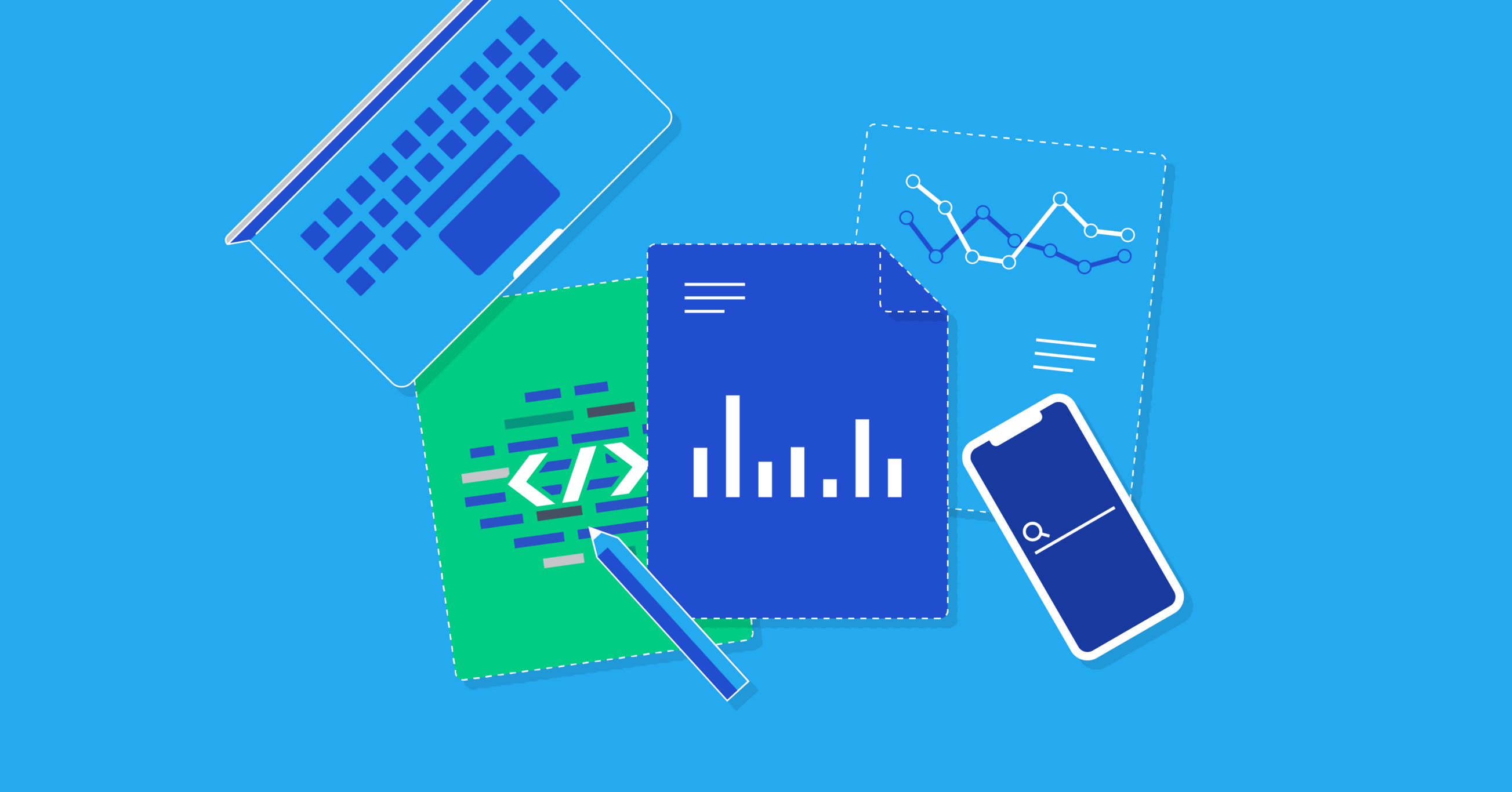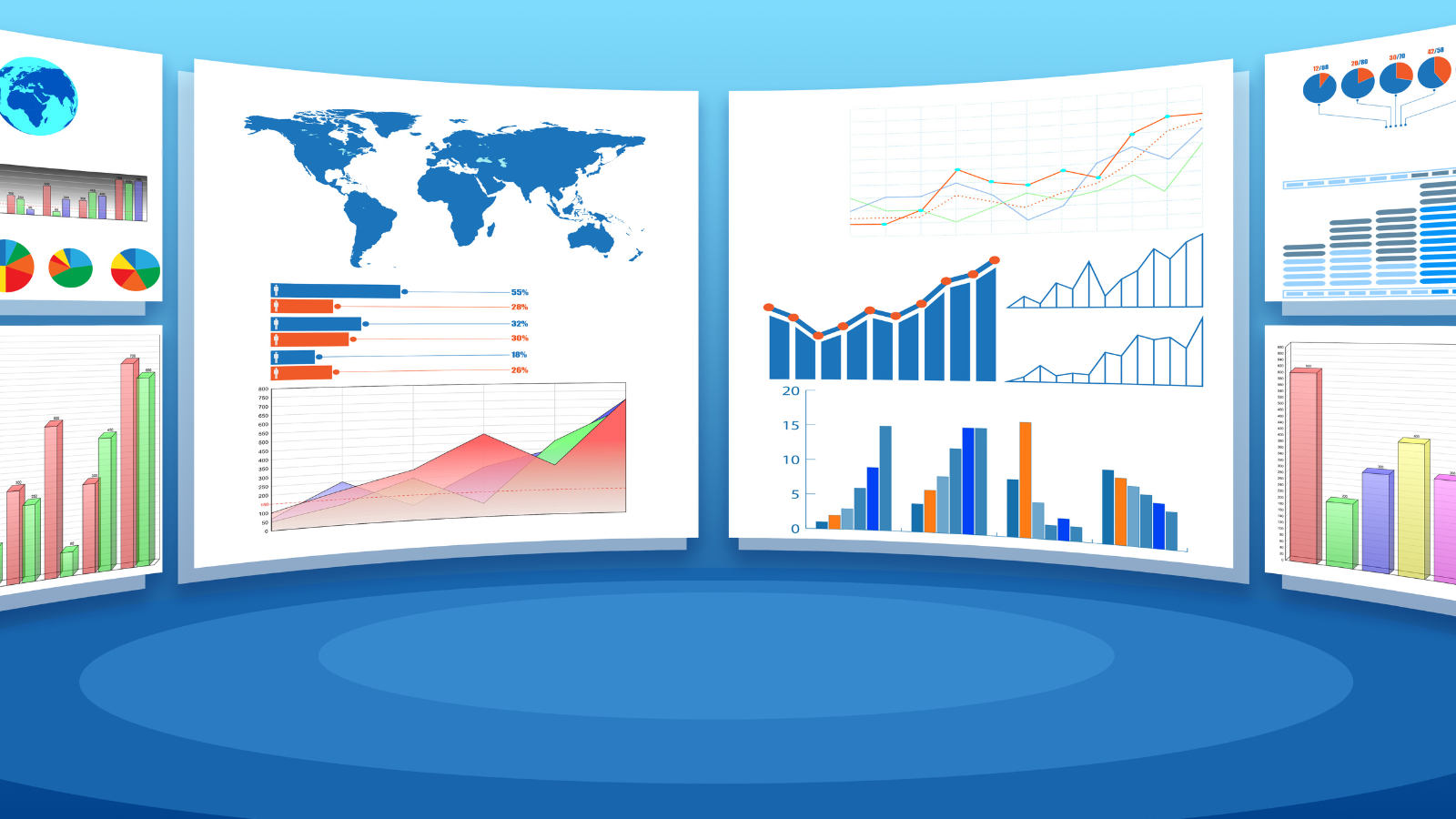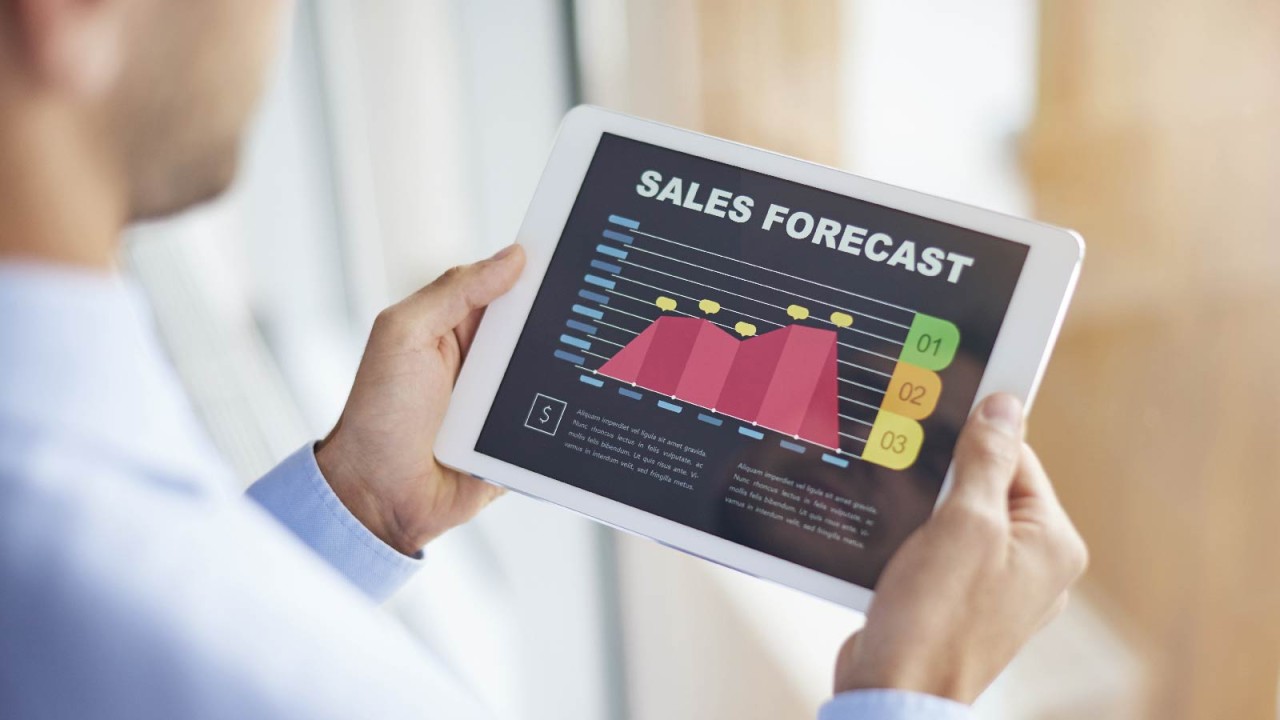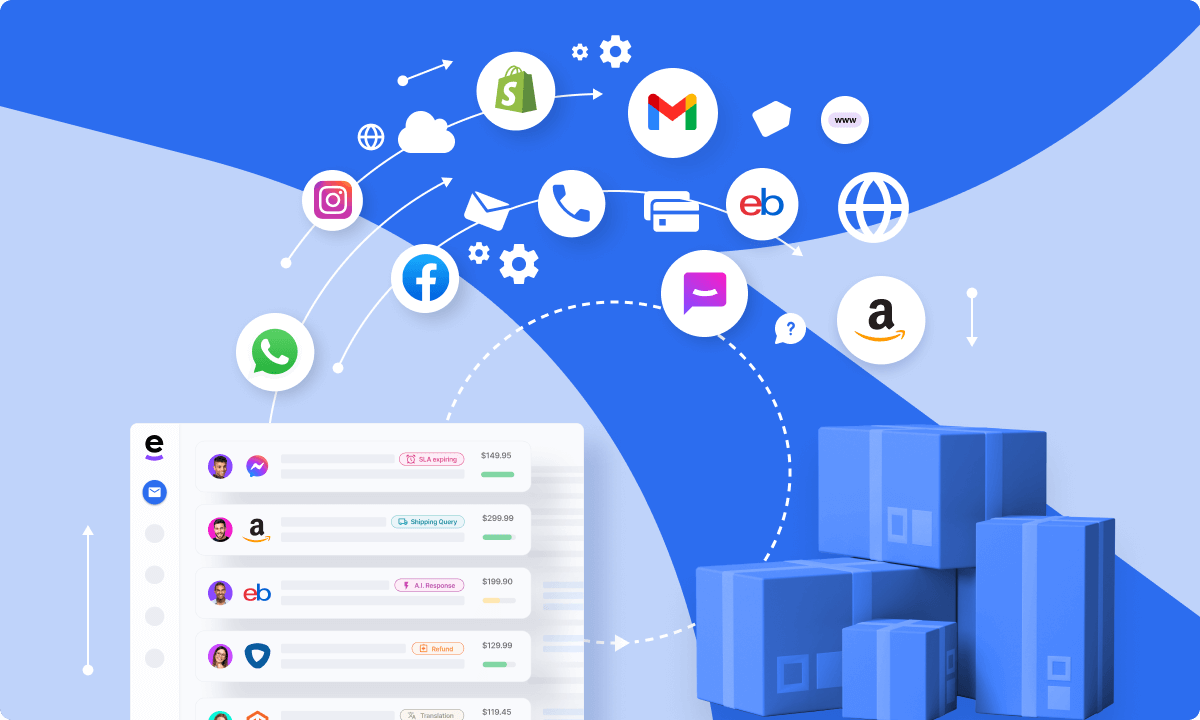
A Complete Guide to Boosting Conversions and Generating Leads
September 19, 2025
Boosting Sales and Engagement Through AI-Powered Marketing Campaigns
September 19, 2025Sales forecasting is not just a number-crunching exercise; it’s the compass guiding a marketer through the tumultuous seas of business. Understanding its essence involves recognizing its evolutionary journey from mere guesswork to a precision-driven science. In this section, we’ll explore the significance of sales forecasting, its historical context, and why every savvy marketer should be at the forefront of embracing Artificial Intelligence (AI) for forecasting prowess.
A. The Essence of Sales Forecasting
Sales forecasting is the strategic engine that propels businesses forward. It’s not merely about predicting numbers; it’s about foreseeing trends, understanding customer behavior, and preparing for market shifts. Imagine it as a weather forecast for your business landscape, enabling you to prepare for sunny opportunities or stormy challenges.
In the yesteryears of business, forecasting was more akin to a crystal ball gazing exercise. Intuition and historical patterns were the guiding stars, but precision was often elusive. Today, with advanced analytics and AI, forecasting has transformed into a science. Accurate predictions drive resource allocation, inventory management, and marketing strategy formulation.
Every marketer, whether steering a small startup or captaining a corporate ship, should care deeply about sales forecasting. It’s the roadmap to profitability, allowing for proactive decision-making in a business environment that can change as swiftly as a viral tweet.
B. The AI Revolution
Enter Artificial Intelligence, the revolutionary force reshaping the landscape of sales forecasting. AI is not just a buzzword but a seismic shift in how businesses approach predictions. It’s the infusion of machine intelligence into the once human-centric domain of forecasting.
AI and Predictive Analytics have formed a symbiotic relationship, transcending the limitations of traditional methods. Where manual analysis falls short, AI algorithms excel. From crunching massive datasets to identifying intricate patterns, AI has emerged as the predictive wizard every marketer needs in their toolkit.
The paradigm shift for marketers involves not just embracing technology but understanding its integration into the core of their strategies. It’s not about humans versus machines; it’s about a harmonious collaboration where AI augments human decision-making capabilities.

Understanding AI Algorithms for Sales Forecasting
Sales forecasting with AI isn’t magic; it’s a sophisticated dance of algorithms, each with its unique role in unraveling the future. In this section, we’ll demystify these algorithms, making them accessible to marketers without a Ph.D. in data science.
A. Regression Analysis
At its core, Regression Analysis is about understanding the relationship between variables. In sales forecasting, it’s the tool that dissects historical data to identify patterns and trends. Think of it as a detective, sifting through evidence to predict future outcomes.
Imagine you’re planning a marketing campaign. Regression Analysis could help predict the impact of various factors—ad spend, seasonality, or market trends—on sales. With AI, this detective work becomes exponentially more accurate. It’s Sherlock Holmes with a data-driven magnifying glass.
B. Time Series Analysis
Time is a crucial dimension in sales forecasting. Time Series Analysis is the method that acknowledges this, recognizing that sales data is not just a snapshot but a dynamic sequence. It’s the maestro conducting the symphony of sales trends over time.
Consider a product launch. Time Series Analysis dives into past launches, dissecting the timeline, identifying peak sales periods, and foreseeing potential pitfalls. AI enhances this by processing vast timelines swiftly, ensuring that your forecast isn’t just a snapshot but a dynamic, evolving narrative.
C. Machine Learning in Sales Forecasting
Machine Learning (ML) takes forecasting to a new echelon. It’s not just about understanding historical data; it’s about learning from it and adapting in real-time. In the realm of sales, it’s the ever-evolving strategist, learning from market shifts and optimizing predictions on the fly.
Picture a chess game where your opponent keeps changing their moves based on your strategy. ML in sales forecasting adapts similarly. It learns from market dynamics, competitor moves, and consumer behavior, ensuring your strategies are never checkmated.
D. Neural Networks
Inspired by the human brain, Neural Networks mimic the complex web of connections that facilitate learning. In sales forecasting, they’re the artists, creating intricate patterns from seemingly chaotic data.
Think of Neural Networks as virtuoso painters. You provide the canvas (data), and they create a masterpiece (forecast). The neural layers simulate the way our brain processes information, capturing nuances that traditional algorithms might miss.

Implementing AI in Your Sales Forecasting Strategy
Knowing the theory is one thing; applying it is another. This section guides marketers through the practical aspects of integrating AI into their sales forecasting strategy, ensuring it’s not just theoretical knowledge but actionable insights.
A. Choosing the Right AI Solution
Selecting the right AI solution is akin to choosing a business partner. It should align with your goals, complement your strengths, and adapt to your unique challenges. It’s not a one-size-fits-all scenario; it’s bespoke tailoring for your business needs.
Consider open-source versus proprietary solutions as the fork in the road. Open-source offers flexibility, a collaborative community, but may demand more technical know-how. Proprietary solutions often come with a user-friendly interface but might limit customization. Choose wisely; your forecasting journey depends on it.
B. Data Preprocessing for AI
Data is the raw material for AI’s creative process. Preprocessing is the refining step, ensuring your data palette is clean, accurate, and ready for the artist that is your AI model.
Think of data preprocessing as preparing ingredients for a gourmet meal. Each data point is an ingredient; cleaning and preprocessing ensure that the final dish—your sales forecast—is not tainted by impurities. It’s the difference between a Michelin-starred dish and a mediocre one.
C. Training Your AI Model
Training your AI model is the rehearsal before the grand performance. It’s iterative learning, fine-tuning the nuances until your AI becomes a virtuoso in predicting sales trends.
Imagine teaching a pet new tricks. Initially, it might fumble, but with patient training, it becomes adept. Your AI model is that trainable pet. The more refined the training, the more accurate and reliable its predictions become.
D. Integrating AI into Your Sales Workflow
AI isn’t a standalone entity; it’s a collaborator in your marketing symphony. Integrating it seamlessly into your workflow ensures that it’s not a disruptor but an enhancer of your everyday tasks.
Think of AI as your marketing assistant. It doesn’t replace human creativity; it amplifies it. Whether it’s suggesting optimal ad schedules, identifying target demographics, or foreseeing market trends, AI becomes an invaluable member of your marketing team.

Challenges and Opportunities in AI-Driven Sales Forecasting
With great power comes great responsibility, and the integration of AI in sales forecasting is no exception. This section explores the hurdles businesses may encounter and the untapped opportunities within the realm of AI-driven forecasting.
A. Challenges
Implementing AI in sales forecasting isn’t a smooth sail; it’s a challenging voyage. One prominent challenge is the concern surrounding data security. As businesses embrace AI, the accessibility of data becomes paramount, but so does the need to protect it from malicious intent.
Resistance from the workforce is another iceberg in these waters. Employees might fear job displacement or mistrust AI predictions. Navigating this resistance requires transparent communication and demonstrating AI as a collaborator, not a competitor.
Ethical dilemmas cast a shadow over AI implementation. The very algorithms designed to predict human behavior can inadvertently perpetuate biases or privacy infringements. Businesses must tread carefully, mindful of the ethical implications of their AI strategies.
B. Opportunities
Within the challenges lie golden opportunities. AI isn’t just a problem-solver; it’s a catalyst for innovation. The ability to process vast datasets and identify patterns opens avenues for creative, out-of-the-box strategies.
Customer experience stands at the forefront of these opportunities. AI allows for personalized interactions at scale, creating an unparalleled level of engagement. It’s the difference between a generic marketing pitch and a tailored, resonant message that converts.
Market expansion is another realm waiting to be conquered. AI equips businesses to navigate global markets with precision. What works in one region might not in another; AI ensures your strategies are adaptable and resonate with diverse audiences.

Case Studies: Real-world Applications of AI in Sales Forecasting
Theoretical knowledge is solidified when applied in the real world. In this section, we’ll explore case studies from retail giants, tech pioneers, and emerging markets, showcasing the tangible impact of AI in sales forecasting.
A. Retail Giants
-
Amazon’s Algorithmic Dominance: A Case Study
Amazon’s recommendation engine, powered by AI, analyzes user behavior to suggest products, boosting sales and customer satisfaction.
-
Predictive Analytics at Walmart: Redefining Retail Strategies
Walmart employs predictive analytics to optimize inventory levels, ensuring products are available when customers need them, reducing stockouts, and maximizing sales.
-
Alibaba’s AI Symphony: Orchestrating Sales Success
Alibaba’s Singles Day sales event leverages AI for personalized promotions, driving a surge in sales by tailoring offers to individual customer preferences.
B. Tech Pioneers
-
Google’s AI Predictions: Beyond Search Engines
Google utilizes AI to predict user queries, improving search accuracy and delivering more relevant ads, contributing significantly to their advertising revenue.
-
Apple’s Precision in Product Launches: The AI Touch
Apple employs AI to analyze consumer trends, ensuring optimal product launches by predicting demand, preventing overstock, and reducing waste.
-
Microsoft’s Dynamic Pricing: A Lesson in Market Adaptability
Microsoft adjusts product pricing in real-time based on market demand and competitor pricing, maximizing revenue and market share through AI-driven dynamic pricing.
C. Emerging Markets
-
AI in Startups: Navigating Limited Resources
Startups leverage AI to make data-driven decisions on a budget, optimizing marketing strategies for maximum impact even with limited resources.
-
Disrupting Traditional Markets: The Airbnb Story
Airbnb uses AI to analyze user behavior, offering personalized property recommendations, and optimizing pricing to capture market demand effectively.
-
AI in E-commerce: The Shopify Revolution
Shopify employs AI to help small businesses optimize their online stores, from recommending product placement to analyzing customer behavior for targeted marketing.

Future Trends: What Lies Ahead for AI in Sales Forecasting
The future is an ever-shifting landscape, and AI in sales forecasting is no exception. In this section, we’ll gaze into the crystal ball, exploring anticipated trends and innovations shaping the future of AI-driven sales forecasting.
A. Advancements in AI Technology
-
Quantum Computing: The Next Frontier
Quantum computing holds the promise of processing vast datasets at unprecedented speeds, revolutionizing the accuracy and complexity of AI models.
-
Explainable AI: Bridging the Trust Gap
As AI becomes more integrated into decision-making processes, Explainable AI aims to demystify complex algorithms, fostering trust among users and stakeholders.
-
AI-powered Automation: Redefining Workflows
The future sees AI not just as an analytics tool but a hands-on collaborator, automating routine tasks, freeing up human resources for strategic decision-making.
B. Industry-specific Innovations
-
Healthcare’s AI Revolution: Beyond Diagnoses
AI is set to play a pivotal role in healthcare, from drug discovery to patient care, with predictive analytics enhancing treatment plans and resource allocation.
-
Financial Forecasting: AI’s Role in Market Predictions
The finance sector anticipates increased reliance on AI for market predictions, risk management, and optimizing investment portfolios for better returns.
-
Travel and Hospitality: Personalizing Experiences with AI
AI will transform the travel industry, offering personalized recommendations, dynamic pricing, and seamless experiences from booking to post-travel, enhancing customer satisfaction.
C. The Human Element in AI
-
AI and Human Collaboration: A Synergistic Future
The future sees a harmonious partnership between AI and human expertise, where AI augments human creativity, offering insights and recommendations for more informed decision-making.
-
Upskilling the Workforce: Preparing for the AI Era
As AI takes on routine tasks, the workforce of the future will focus on upskilling, embracing roles that require emotional intelligence, creativity, and strategic thinking.
-
The Ethical Compass: Guiding AI Development
Ethical considerations will be at the forefront of AI development, with businesses and developers prioritizing fairness, transparency, and accountability in AI algorithms.
Conclusion
As we conclude this exploration of mastering sales forecasting with AI, the key takeaway is that AI is not a distant future; it’s the present. Embracing this revolution isn’t just an option; it’s an imperative for marketers navigating the ever-evolving landscape of business. The future is now, and mastering sales forecasting with AI is the compass guiding your journey to sustained success.
A. Embracing the AI Revolution
AI isn’t here to replace; it’s here to enhance. Embrace the collaboration between human ingenuity and machine intelligence for a future where forecasts are not just accurate but visionary.
B. The Imperative of Adaptation
The business landscape is a dynamic ecosystem. Those who adapt thrive; those who resist risk becoming obsolete. AI is not a disruptor; it’s an evolutionary necessity.
C. The Future is Now: Mastering Sales Forecasting with AI
In the intersection of data and AI lies the power to shape the future. It’s not a distant horizon; it’s the present. Mastering sales forecasting with AI is not just a choice; it’s the compass guiding businesses toward sustainable growth.


